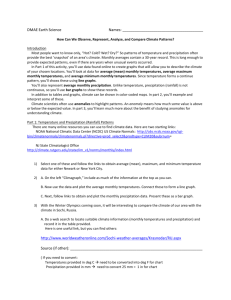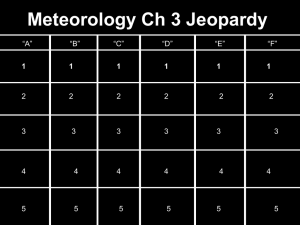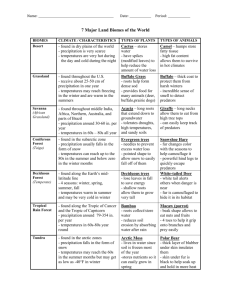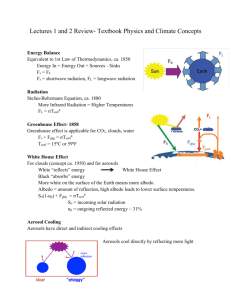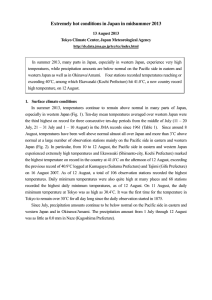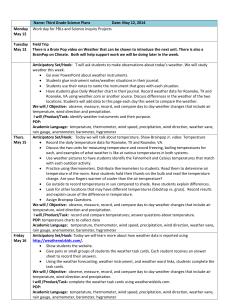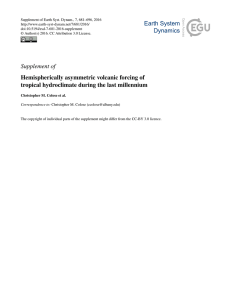Mesa Lab, Main Seminar Room NCAR, 1850 Table Mesa Drive Co
advertisement
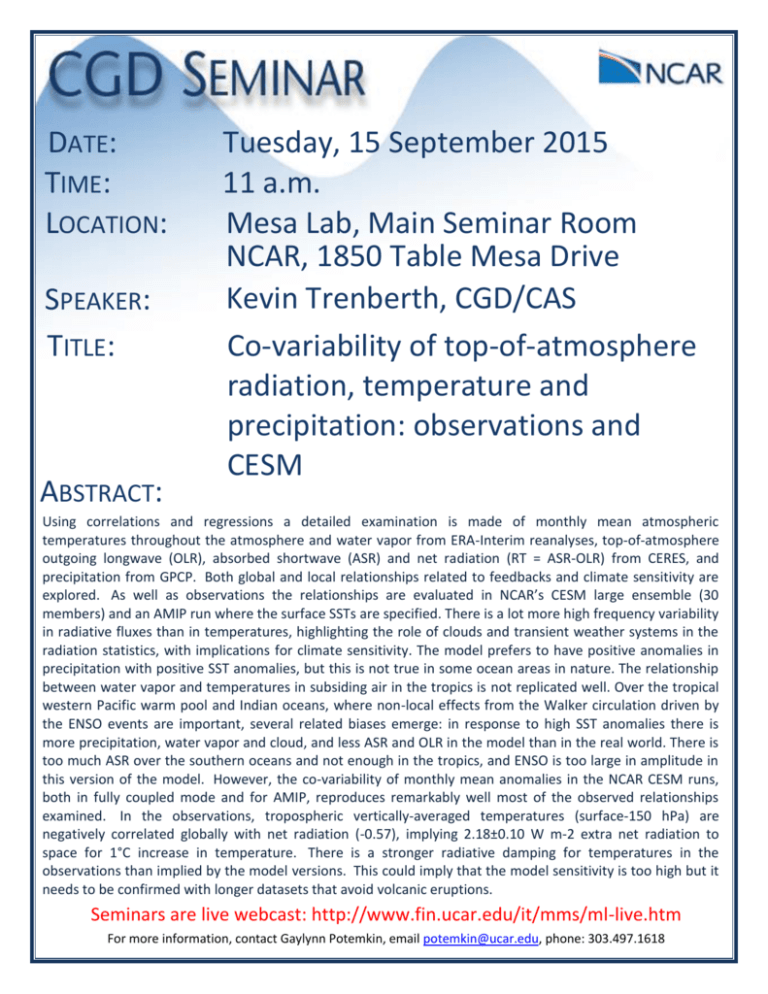
DATE: TIME: LOCATION: SPEAKER: TITLE: ABSTRACT: Tuesday, 15 September 2015 11 a.m. Mesa Lab, Main Seminar Room NCAR, 1850 Table Mesa Drive Kevin Trenberth, CGD/CAS Co-variability of top-of-atmosphere radiation, temperature and precipitation: observations and CESM Using correlations and regressions a detailed examination is made of monthly mean atmospheric temperatures throughout the atmosphere and water vapor from ERA-Interim reanalyses, top-of-atmosphere outgoing longwave (OLR), absorbed shortwave (ASR) and net radiation (RT = ASR-OLR) from CERES, and precipitation from GPCP. Both global and local relationships related to feedbacks and climate sensitivity are explored. As well as observations the relationships are evaluated in NCAR’s CESM large ensemble (30 members) and an AMIP run where the surface SSTs are specified. There is a lot more high frequency variability in radiative fluxes than in temperatures, highlighting the role of clouds and transient weather systems in the radiation statistics, with implications for climate sensitivity. The model prefers to have positive anomalies in precipitation with positive SST anomalies, but this is not true in some ocean areas in nature. The relationship between water vapor and temperatures in subsiding air in the tropics is not replicated well. Over the tropical western Pacific warm pool and Indian oceans, where non-local effects from the Walker circulation driven by the ENSO events are important, several related biases emerge: in response to high SST anomalies there is more precipitation, water vapor and cloud, and less ASR and OLR in the model than in the real world. There is too much ASR over the southern oceans and not enough in the tropics, and ENSO is too large in amplitude in this version of the model. However, the co-variability of monthly mean anomalies in the NCAR CESM runs, both in fully coupled mode and for AMIP, reproduces remarkably well most of the observed relationships examined. In the observations, tropospheric vertically-averaged temperatures (surface-150 hPa) are negatively correlated globally with net radiation (-0.57), implying 2.18±0.10 W m-2 extra net radiation to space for 1°C increase in temperature. There is a stronger radiative damping for temperatures in the observations than implied by the model versions. This could imply that the model sensitivity is too high but it needs to be confirmed with longer datasets that avoid volcanic eruptions. Seminars are live webcast: http://www.fin.ucar.edu/it/mms/ml-live.htm For more information, contact Gaylynn Potemkin, email potemkin@ucar.edu, phone: 303.497.1618



